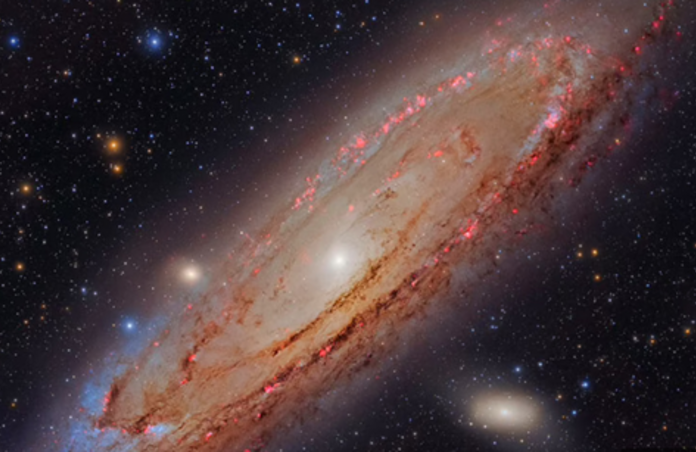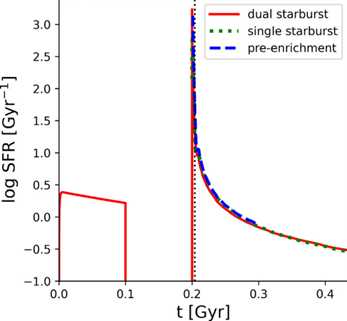Anomalous Chemical Enrichment of Heavy Elements in Young Galaxy

Cosmological models are largely settled on the structure of the very early universe which, moments after the big bang, could be modelled as a smooth, homogeneous fluid. As the universe cooled and expanded, this led to the decoupling of photons and neutrinos from the primordial mixture. This further allowed baryons and electrons to interact and remain stable for the first time, forming the two lightest elements, hydrogen and helium. As the universe continued to cool, the ratio between these two elements was frozen in, a balance that largely persists to this day. The eventual transition to matter domination brought about the formation of stars, whose deaths first enriched the interstellar medium with heavier elements.
However, recent observations have presented us with apparent contradictions to this narrative. GN-z11 was formerly known as the highest redshift object observed, before the time of the James Webb Space Telescope (JWST), identified at a spectral redshift of z = 10.6. This corresponds to a lookback time of ~13.4 Gyr, an epoch around 440 million years after the big bang.
Using JWST GN-z11 was identified to have an unusually high abundance of Nitrogen, with an N/O ratio more than four times the solar amount. Initial interpretations of the data have proposed that nothing short of the death colossal, supersolar star (~1000 M⊙) could have enriched the galaxy to such an extent, so early in the universe’s lifespan. While population III stars, the first stellar generation, are believed to be unusually large by current standards, models usually constrain these anywhere between 100 – 300 M⊙.
Further analysis, led by Chiaki Kobayashi, clarifies these results into a more reasonable model, which does not require such an implausible explanation. Their model describes two periods of intense stellar formation, separated by a period of quiescence, lasting ~100 Myr. They attribute these results primarily to the abundance of Wolf-Rayet stars, of masses up to 120 M⊙, following the second starburst period. These are stars whose atmospheres are depleted of hydrogen and enriched with heavier elements, including nitrogen. These form when the outer hydrogen layers of a heavy star are stripped by intense stellar winds or interactions with a binary companion.

Kobayashi et al also discuss alternative explanations, including a single starburst period, with more massive stars, as well as more rapid enrichment via pair instability supernovae, which can occur sooner in the universe’s life. In the former case, their models estimated nitrogen abundances that below the observed values, while the latter found a depreciating nitrogen abundance. They likewise discuss the possibility of enrichment from extragalactic sources, but likewise discount this possibility.
The study manages to reproduce present day nitrogen abundance due to internal enrichment processes, brought about by two periods of intense starburst formation and leading to the abundance of exposed Wolf-Rayet stars. Their models showcase a more dynamic star formation history in super early galaxies, and places crucial constraints on future attempts to describe the primordial universe. However, they likewise acknowledge the challenges that will be faced in observationally confirming such a model, as the rapid chemical evolution of the galaxy will inevitably obscure any short-period signatures, such as those that would have otherwise been left behind by the period of quiescence.
--
Journal Source: C. Kobayashi, A. Ferrara, Rapid Chemical Enrichment by Intermittent Star Formation in GN-z11, The Astrophysical Journal Letters, Vol 962, No. 1, 2024, https://doi.org/10.3847/2041-8213/ad1de1
Cover Image: Nasa/Abdullah Al-Harbi (Andromeda Galaxy)
